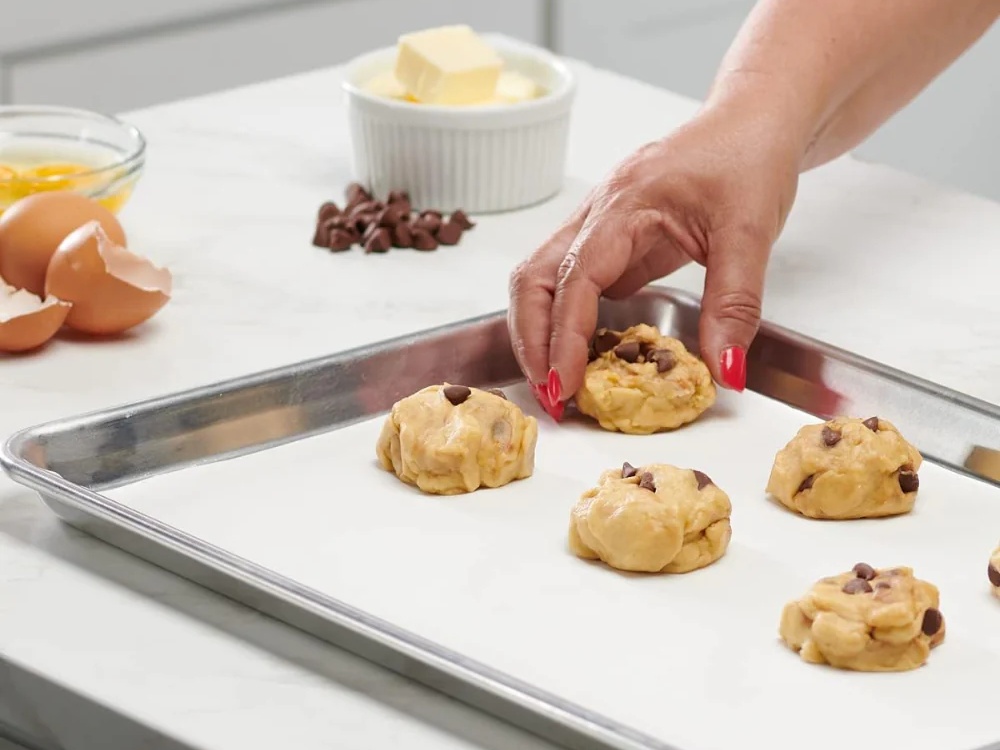What is Baking Paper and Its Advantages
Today, both food factories and home kitchens care more and more about cooking safely and efficiently.
That’s why baking paper has become an important tool in the kitchen. Whether you run a bakery or just enjoy baking at home, using baking paper the right way can make baking easier and cleaner.
In this article, we will explain what baking paper is, the different names it goes by, the benefits and how to use it properly.
What is Baking Paper?
Baking paper, also called non-stick baking paper, is a special kind of paper used for baking, heating, wrapping, and steaming food.
The surface is usually coated with food-grade silicone or another oil-resistant layer.
This gives baking paper its main features:
Heat resistant: Normal baking paper can handle up to 220°C, while some high-end ones can go up to 250°C.
Oilproof and waterproof: Stops oil and water from soaking into pans or trays.
Safe for food contact: It’s non-toxic, has no smell, and doesn’t give off harmful chemicals when heated.
Soft and flexible: Easy to fold or cut to fit different baking tools.
Some top-grade baking papers even have silicone coating on both sides, so you can use either side and reuse it a few times.
What’s the Difference between Baking Paper and Parchment Paper?
Some sellers try to make their product seem different by using different names. But in fact, baking paper and parchment paper are usually the same thing. They’re both non-stick, heat-resistant paper used for baking, steaming, freezing, and keeping food from sticking.
People in different places use different names. In North America (like the U.S. and Canada), it’s often called parchment paper, because the focus is on how the paper is treated. In Europe and Australia, people call it baking paper, to show it’s used for baking. Even in India, some people just call it butter paper.
So no matter what the name is, they are generally used in the same way.
What are the Benefits of Baking Paper?
No sticking: You don’t need to add extra oil, and food can be easily removed from the pan.
Easy cleanup: After using baking paper, there’s almost nothing to wash—this saves a lot of time, and water, you know.
Better baking efficiency: It’s perfect for baking in large batches and protects your trays from damage.
Health and safety: Helps avoid burnt food bits or black residue when baking at high temperatures.
Saves materials and energy: You can cut the paper to fit your tray, reduce waste, and help the heat spread more evenly.
Many uses: Besides baking, you can also use it for steaming, storing food in the fridge, drying cheese, or handling chocolate.
Eco-friendly: Some high-end papers are made from materials that break down naturally, which is better for the environment.
How to Use Baking Paper Correctly
If you want to get the most out of baking paper, these tips will help:
First, leave extra space around the edges (2–3 cm) before cutting the paper, so it fits the tray and blocks food from touching the sides.
Secondly, use a little batter or water on the edge of the paper to stick it down and stop it from sliding around.
Thirdly, even if the packaging says it’s reusable, try not to use it more than 2 or 3 times.
Fourthly, don’t use it in grill mode in the microwave or near open flames—it can catch fire easily.
Fifthly, store in a dry place, maybe in a bag, to keep out dust and protect the coating.
Sixthly, it works even better with baking molds, which can help improve the final look of your baked goods.

Baking paper is like a little helper in the kitchen. In the past, baking often left flour or grease stuck to trays, and cleaning them took a long time. People’s hands got rough from all that scrubbing.
But now with baking paper, there’s no need to scrub pans, food doesn’t stick, and cakes or cookies can be removed easily. After baking, you hardly need to wash anything. This saves water and time.
Also, it helps keep your baked goods looking nice and whole, which means fewer broken pieces and better results. All of this is thanks to improvements in paper-making technology over the years.
